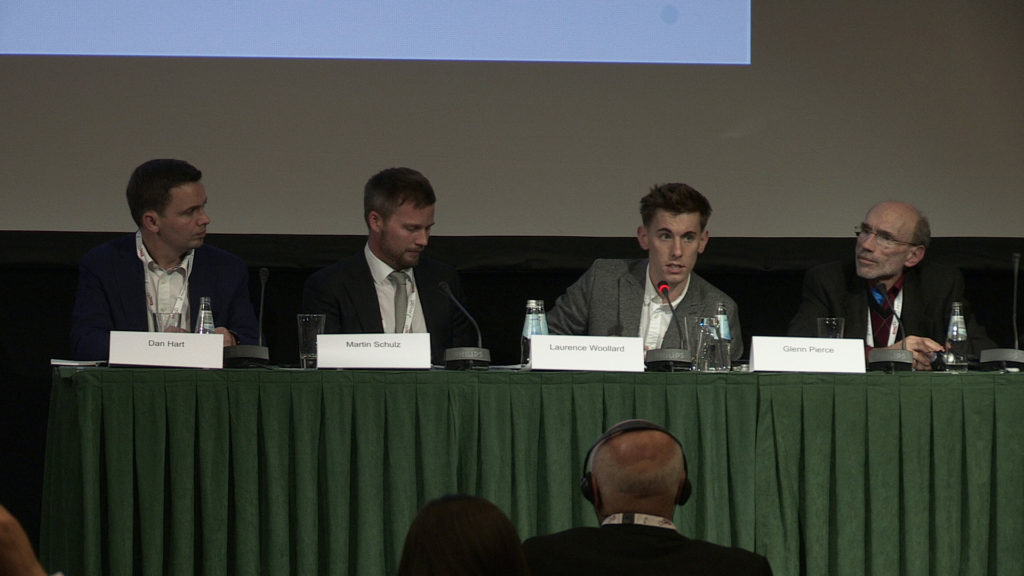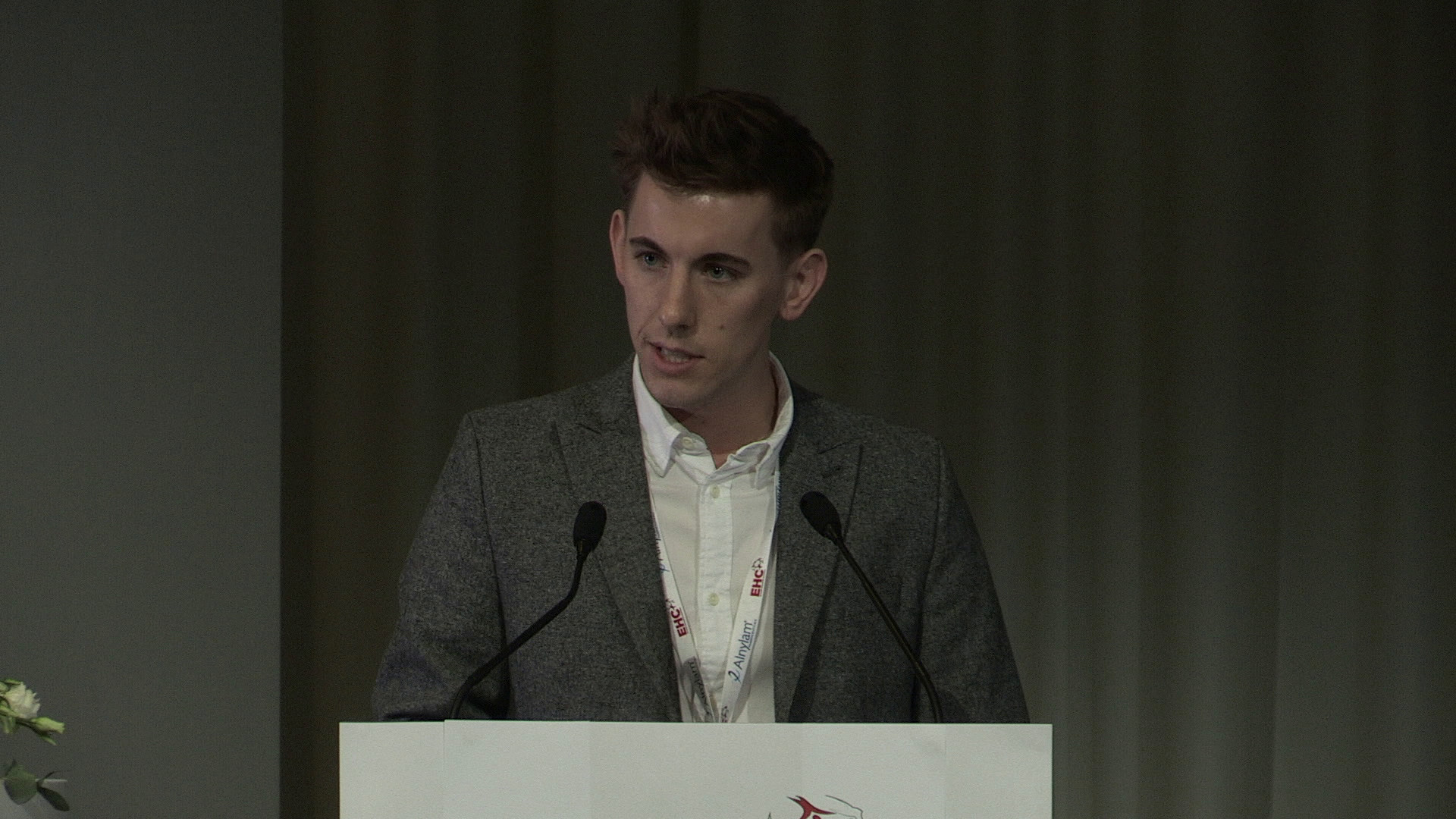The furthest east in Europe I’ve ever been, Vilnius in Lithuania was the host capital to the annual European Haemophilia Consortium Conference, which celebrated its 30th anniversary year. It was also a milestone event for me personally, having been asked to speak for the first time as part of an industry-sponsored symposium.
The symposium title was, Patients as pioneers in haemophilia care: Understanding the past, partnering for the future. Its organiser, Pfizer, aimed to explore patient and physician perspectives in the changing treatment landscape and the role of patients in bringing breakthrough therapies to market.
It was a pleasure to share the stage with Dr. Dan Hart, Honorary Consultant Haematologist at The Royal London Hospital, and Dr. Glenn Pierce, a prominent figure in the biotechnology and bleeding disorders community.
Many thanks to Pfizer for inviting me, Dr. Martin Schulz, Pfizer Regional Medical Team Lead Haemophilia, for co-chairing and to all of those who attended. For those who couldn’t make it and are interested in what I had to say, here are some key aspects I covered in my presentation:
‘Evolution in haemophilia care’
I set the scene with my grandad, David and through a visual timeline, spoke about his haemophilia care in comparison with my own. With no treatment options for almost half of his life, he developed serious joint damage. The eventual breakthrough in plasma-derived factor production during the ‘70s was a turning point and, subsequently, it was made possible for him to infuse at home. Tragically, progress came at a price; like many of his era, his life would be cut short as a result of contaminated blood products.
Necessity meant that treatment was made safer for mine and my brothers’ generation. However, being treated on demand in my early years, I too, like grandad, have developed significant joint arthropathy. In fact, I have a fused ankle, as do both of my siblings. For my parents, it was a big ask to routinely inject each of us during the everyday of a busy family life. The move to self-treating and secondary prophylaxis at around 10 years old went some way towards reducing my bleeding episodes. Still, my story only goes to prove that early prevention and intervention is undoubtedly the priority when it comes to good outcomes.
‘Service Provision’
The benefit of prophylaxis, the so-called “Gold Standard of treatment”, has been key to offering us more life choices than would have otherwise been possible, myself included. Nonetheless, I never truly appreciated how my care needs would manifest. On screen, I demonstrated 14 separate healthcare providers I’ve needed to access in the past year alone to help me live as independently as possible. I’m grateful to have access in the first place and I appreciate that, for many others, the services needed extends far beyond my own.
It goes to show that a multidisciplinary care approach to haemophilia is fundamental. Yet, where developed healthcare systems exist, as in the UK, it can be complex and frustrating for patients and caregivers to navigate the most efficient route. What about as I get older? I expect it’s not going to get any easier…

‘In The Driving Seat’
It’s a bit embarrassing to admit it but, at 28, I’m still learning to drive. But, during my presentation, I likened my experience to that of an ideal patient/physician relationship where best individual outcomes can be achieved.
It makes sense for me to be behind the wheel; I’m living day-to-day with my condition, so I would like to be steering the direction of my treatment and care based on my lifestyle choices… but with dual control. I need the physician’s expertise in setting realistic treatment goals, but also be ready to put on the brakes if they think I’m going the wrong way about it. I also want to feel at ease to express any concerns, with the physician willing to adapt his or her approach tailored to my needs. They need to be open minded to other influences affecting how I’m managing my haemophilia (e.g. mental wellbeing), whilst helping me to identify hazards that could put me at risk.
I shared a case study about a 14-year-old boy suffering a psoas bleed resulting from sexual activity. Aside from the fact that he’s underage, is he understanding why, when and how much to treat to give him suitable cover? Who does he feel comfortable talking about this with and are there services easily accessible to support and educate him?
‘Practical Approaches’
There are now tools at our disposal to benefit both the patient/caregiver and clinical team when informing treatment decisions.
I spoke about my personal use of an online and mobile treatment tracker, which can immediately flag up bleeds and lead to swifter action – unlike yesteryear, when months went by in-between posting paper records. There are also devices to assess and visualise peak and trough clotting factor levels, which lead to my prophylaxis dosing being adjusted to ensure optimum benefit. What’s more, the introduction of point of care ultrasound as part of my physio assessments have encouraged dialogue around joint management that I haven’t previously had.
The event provided a great platform for discussion around these topics and beyond. If you would like to join the conversation, why not get in touch? You can tweet me and the team at @PulseInSync with your thoughts and questions – we would love to hear from you! Also, please check out more photos from the event on our Facebook page.
Take care,
Laurence
(Editor’s note: Thank you to Synergy Medical for their support throughout and photo use as well as Madz Smethurst – Twitter @MaddyBubs – for copywriting assistance.)

